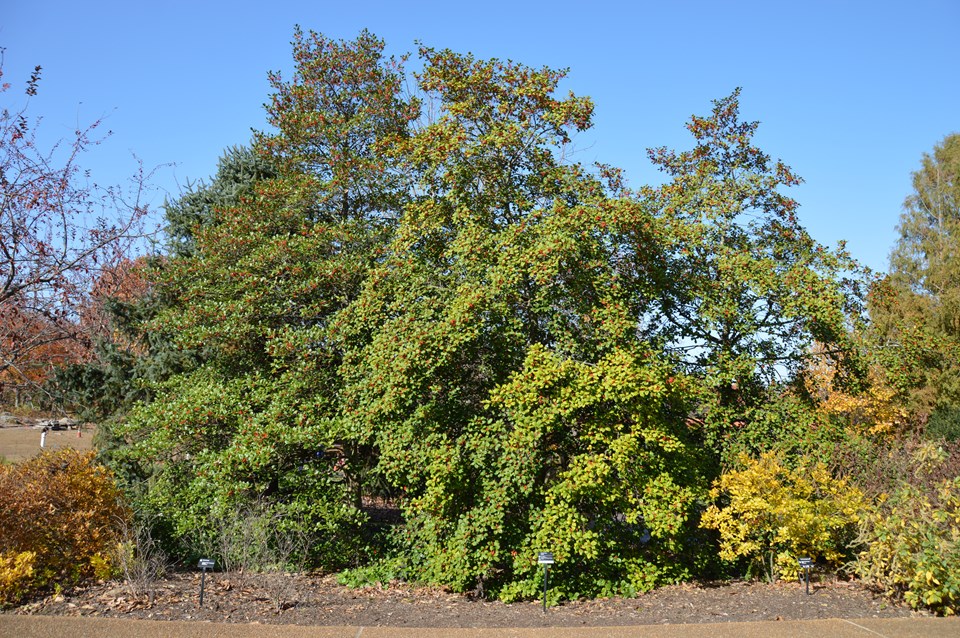American Holly (Ilex Opaca)
American Holly
Ilex opaca, commonly called American holly, is an upright, pyramidal, evergreen tree that slowly matures to 15-30′ in cultivation, but may reach 50′ tall in the wild. It is native to the eastern and central U.S., most frequently found in moist woods, forest bottomlands and swamp peripheries plus some coastal dunes (e.g., Cape Cod down the Atlantic Coast) from Massachusetts to West Virginia to Ohio to southeastern Missouri south to Texas and Florida. This species is easily identified because it is the only native U.S. holly with spiny green leaves and bright red berries. This is the Christmas holly whose berry-laden boughs are typically collected at Christmas time each year for ornamentation (“decking the halls” as it were). Thick, leathery, deep green leaves (2-4″ long) have spiny marginal teeth. Species is dioecious (male and female flowers are on separate trees). Greenish-white flowers bloom May-June (male flowers in 3-12 flowered clusters and female flowers solitary or in 2s or 3s). Bright red or orange fruits (drupes to 1/4- 1/2″ diameter) ripen in fall on pollinated female trees, and persist on the tree through winter. Birds love the fruit.
Genus name comes from the Latin name Quercus ilex for holm oak in reference to the foliage similarities (holm oak and many of the shrubs in the genus Ilex have evergreen leaves).
Specific epithet means opaque or dull, in reference to the non-lustrous leaf surfaces of species plants (many of the cultivars have more lustrous foliage).

Easily grown in average, consistently moist, acidic, well-drained soils in full sun to part shade. Leaves typically yellow in alkaline soils. Tolerates a broad range of soil conditions, but will not tolerate flooding or soils saturated with moisture. Avoid poorly drained soils. Best growth in the wild usually occurs in rich bottomlands and swamp margins. Site in locations protected from cold winter winds. Part afternoon shade is best in hot summer climates. Plant foliage loses density in too much shade.
| Hardiness zone | 5 - 9 |
| Sun light | Full Sun To Part Shade |
| Water | Medium |
| Maintenance | Low |
Potential insect problems include holly leaf miner, spider mites, whitefly and scale. Potential disease problems include leaf spot, leaf rot, tar spot and powdery mildew. Plants are also susceptible to leaf drop, leaf scorch and chlorosis (yellowing of leaves in high pH soils).
Specimen or group. Foundation planting. Foliage provides excellent color for the winter landscape, and cuttings of the same are popular additions to Christmas wreaths and decorations. Berries are attractive and a good winter food source for birds. Hedges. Woodland gardens.
| Common name | American Holly |
| Botanical name | Ilex Opaca |
| Plant type | Broadleaf Evergreen |
| Family | Aquifoliaceae |
| Hardiness zone | 5 - 9 |
| Water | Medium |
| Maintenance | Low |
| Flower color | Creamy White |
| Flowering period | May |
| Height | 15 - 30 Ft. |
| Width | 10 - 20 Ft. |